National Museum of San Matteo
This is the Museum, you'll find it at Lungarno Mediceo if I remember correctly, but in any case, the fourth bus-stop along Lungarno.

Well, once arrived there, you must know that you'll gonna spend about three hours or maybe more to see and read everything. And I really advise you to read the information, stories in order to understand what you see in that room, or where you are (as period)... It's amazing and if it's a good story, you'll remember it for sure! And it's not because I study history, it's because I love good stories about people!
Let's start with:
The sculpture in Pisa in the XII - XV centuries
This set in the old presbyterial space of the San Matteo Church, which was reserved for the clergy and built during the works begun in the XIII century. The expansion of the church of the monastery originally built in the XI century is still very visible alongside the Arno River.
The exhibition shows sculptures and architectural decorations of large size come to the public collections after renovation of religious buildings or because of conservative reasons.

The oldest works were previously part of the collection of the Camposanto Monumentale, gathered by his Conservator Carlo Lasinio at the beginning of the XIX century. In the final arrangement of the Museum in 1992, that documents the remains of the erratic medieval sculptures in Pisa.
During recent restorations on large parts of the sculptures, very extensive tracks of ancient polychromy and gilding resurfaced, allowing to imagine how could look the narrative liveliness and preciousness of the original works, whether they were placed in the internal or in the external parts of the buildings.
Particularly striking in its narrative rhythm and in its iconographic complexity is the narration of the "Stories of Constantine and Pope Sylvester" carved on the Epistle of the Church of San Silvestro, an essential part of the medieval asset of the facade dismantled during its reconstructing in the XVIII century.
- "In this Chapel of St. Sylvester, the artist painted with a vigorous freshness that declared from the very walls that the tides had turned. A series of panels right above the head of the visitor tells the story of how St. Sylvester converted Constantine. The story is taken from the Golden Legend, which in this case is not historically accurate, but more important than historical accuracy the artists make a contemporary point about the Emperor. According to the legend depicted, Constantine started his tenure as co-emperor as a persecutor of Christians. For his sins, he was struck with leprosy. This illness is dramatically rendered in the fresco. The Emperor, replete with crown and jeweled robes, is depicted as covered with red spots while his head drops in shame. There was only one supposed cure for leprosy in that age, which required that the victim bathes in the warm blood of babies to expunge the disease. An astonishing scene represents the leprous emperor, sitting on his throne and giving the order to have the babies gathered up for slaughter. Mothers and fathers plead, wail and clutch their children to no avail — the emperor must be cured. Constantine, however, was troubled by this solution and rejected the cure, speaking some of the most resonant lines of the Golden Legend: “The honor of the Roman people is born of the font of piety, which gave us the law that anyone who kills a child in war shall incur the sentence of death. “What cruelty would it be then if we did to our own children what we are forbidden to do to aliens! What do we gain in conquering barbarians if we allow cruelty to conquer us!”
- Constantine was rewarded with a dream of St. Peter and St. Paul telling him to seek out Pope Sylvester in Rome. Upon finding the Pope, Constantine had himself baptized, and, in cleansing his soul, his body was healed. Constantine’s gratitude to the Pope was boundless. Kneeling before the Pope, he recognized the importance of the spiritual power of the Pope. Constantine paid honors to St. Sylvester and even led the Pope’s horse on foot, something Frederick II was unlikely to be repeating. This story, which tries to define the realms of the temporal and spiritual, how the overlap and to interact, shows the sophisticated medieval understanding that Church and state are not so easily divided. Separated from any moral authority, the state weakens and loses sight of what is best for its citizens."
- this article is written by Elizabeth Lev and you can find it by googling Stories of Constantine and Pope Sylvester.
The reliefs are arranged in two narrative sections originally divided by painted and certainly polychrome captions. The figures have eyes accentuated by elements in lead. They are attributed to a Pisan sculptor of the second half of the XII century.
Effectively aggressive in portraying the clipping of prey are also the two lions with a human prey, modeled on the type of classical sculpture, reintroduced in the mid-XII century by Guglielmo in the first pulpit for the Pisa Cathedral (today in Cagliari), but reused with a Christian meaning alluding to a sin.

To the same time also belongs the block with Redeemer Christ and symbols of the Evangelists from Castellina Marittima, probably an epistle from the disappeared abbey church of San Salvatore in Moxi, created, as states the inscription engraved on the base, from Bonusamicus.
In 1204 (Pisan style) is dated the Blessing Christ from the San Michele Degli Scalzi Church created by a Byzantine sculptor, arrived in Pisa with the workshops of sculptors also active on the eastern portal of the Baptistery.
A nucleus of sculptures of great importance is related to the work of Lupo di Francesco and his fruitful workshop, mainly routed by his three children. Following the family tradition, he was active in the first half of the XIV century as heir of Tino di Camaino, who had in turn replaced Giovanni Pisano to his death, in the direction of the building for the Opera del Duomo. In fact, in the second quarter of the century, Lupo monopolized all the major sites of architecture and sculpture in Pisa and was also present since 1328 in Barcelona to realize in the cathedral the tomb of the patron Santa Eulalia.
By this artist is exhibited:
- The remains of the pulpit of the San Michele in Borgo church, for which is unknown the original location; the recent restoration has revealed small traces of colors and gilding and the fact that the part with the Annunciation, perhaps not pertaining to the original complex, appears to be from a slightly earlier era
- The statues of the Madonna with the Child, Angels and an Abbot from the tabernacle of the facade of the same church with an extraordinary portrait of the purchasing Abbot: in this case, the restoration found that the Madonna had painted face and hair, a red dress, and a white mantle with golden racemes, similarly to the dress of the Child
- The architectural and sculptural remains, previously decorated with gold and polychrome, which constituted the superior part of the monument sepulcher of the Counts of Gherardesca, erected in the San Francesco Church by the Count Bonifazio Novello around 1329 in memory of the greatest exponents of his family, recently departed.
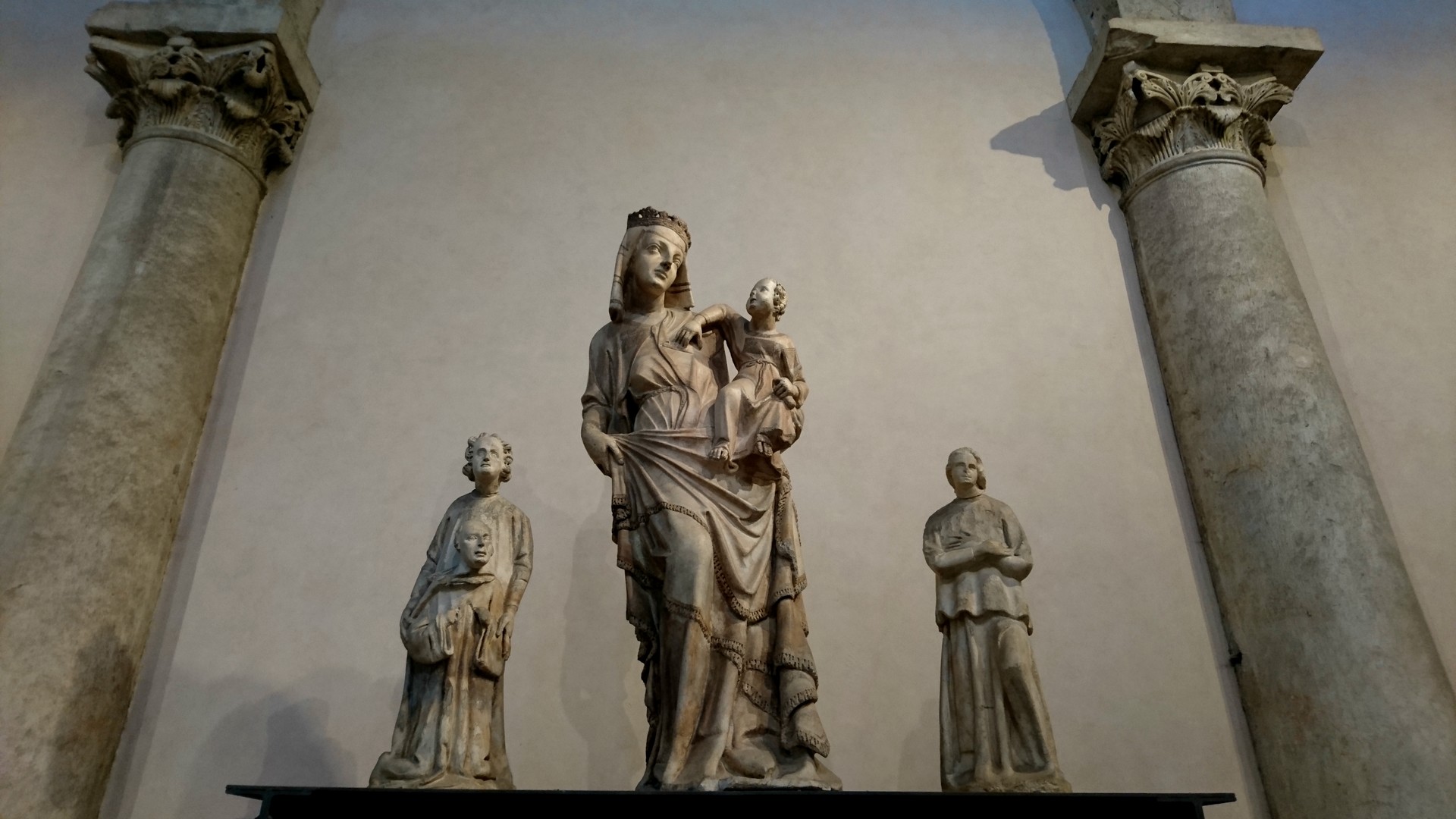

Giovanni di Balduccio sculptor contemporary to Lupo and similarly trained in the atelier of Giovanni Pisano and Tino di Camaino completed the high-relief with the Madonna and the Child from the Santa Maria Della Spina Church.
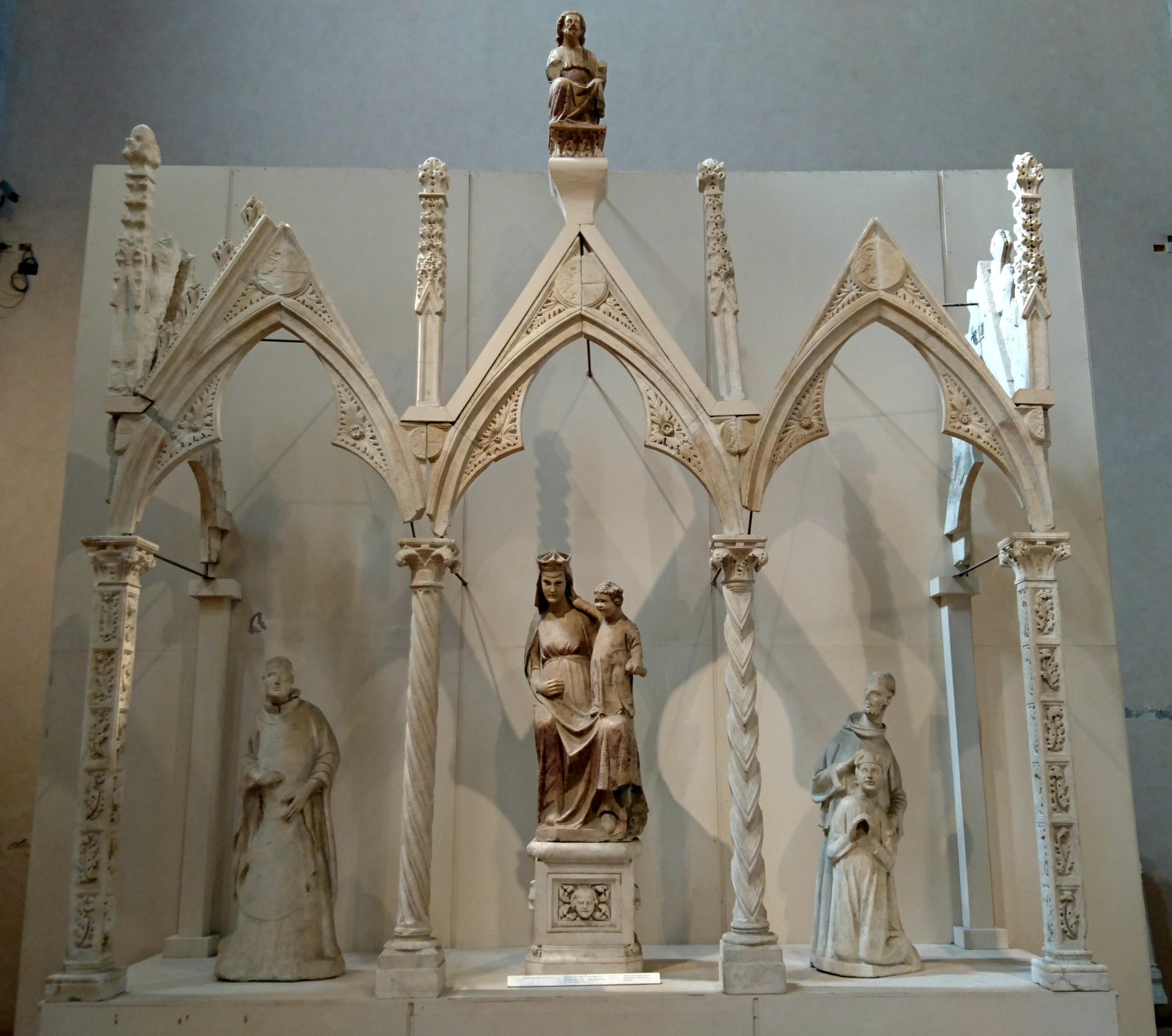
At the moment the hall collects also a core of works of the XV century. The upcoming end of the new arrangement of the spaces will create the place for the complete exhibition of the sculpture of this century.
These are the parts of the pulpit of the San Sisto Church, created by an unknown but certainly sensitive sculptor, perhaps to be dated between the XIV and the XV century. He demonstrated to be open to the classicism of the upcoming early Renaissance culture, early elaborated in between the Versile workshops of Pardini da Pietrasanta and the workers who completed the external parts of the Pisa Cathedral and were active in other Pisan church as San Antonio. From this church are presented two interesting human protomes (cloister).
When Pisa changed its political and cultural guidelines, Andrea Guardi sculptured the base of the presbytery of the church of Santa Maria Della Spina with images of the Virtues. This Florentine sculptor was widely active in Pisa in the second half of the XV century, when worked for the Cathedral and for several other churches. He and his workshop are awarded for creating two bas-reliefs in the Museum representing the Madonna with the Child, the tombstone of Niccolo del Tignoso and various erratic and fragmentary works.
Of great interest for the magnificent physiognomic representation and for the entire classical attitude of the figures is the sepulchral monument of Matteo Bandini (died in 1501) who was executed for the church of Santa Croce in Fossabanda by a fine sculptor, today still unknown.
Next room is dedicated to different Crosses that tell us their story.
This room is devoted to painted Crosses, highly relevant masterpieces of Medieval art for their moving message: the "Christus triumphs" - with wide open eyes - or the suffering but peaceful and so human "Christus patience".
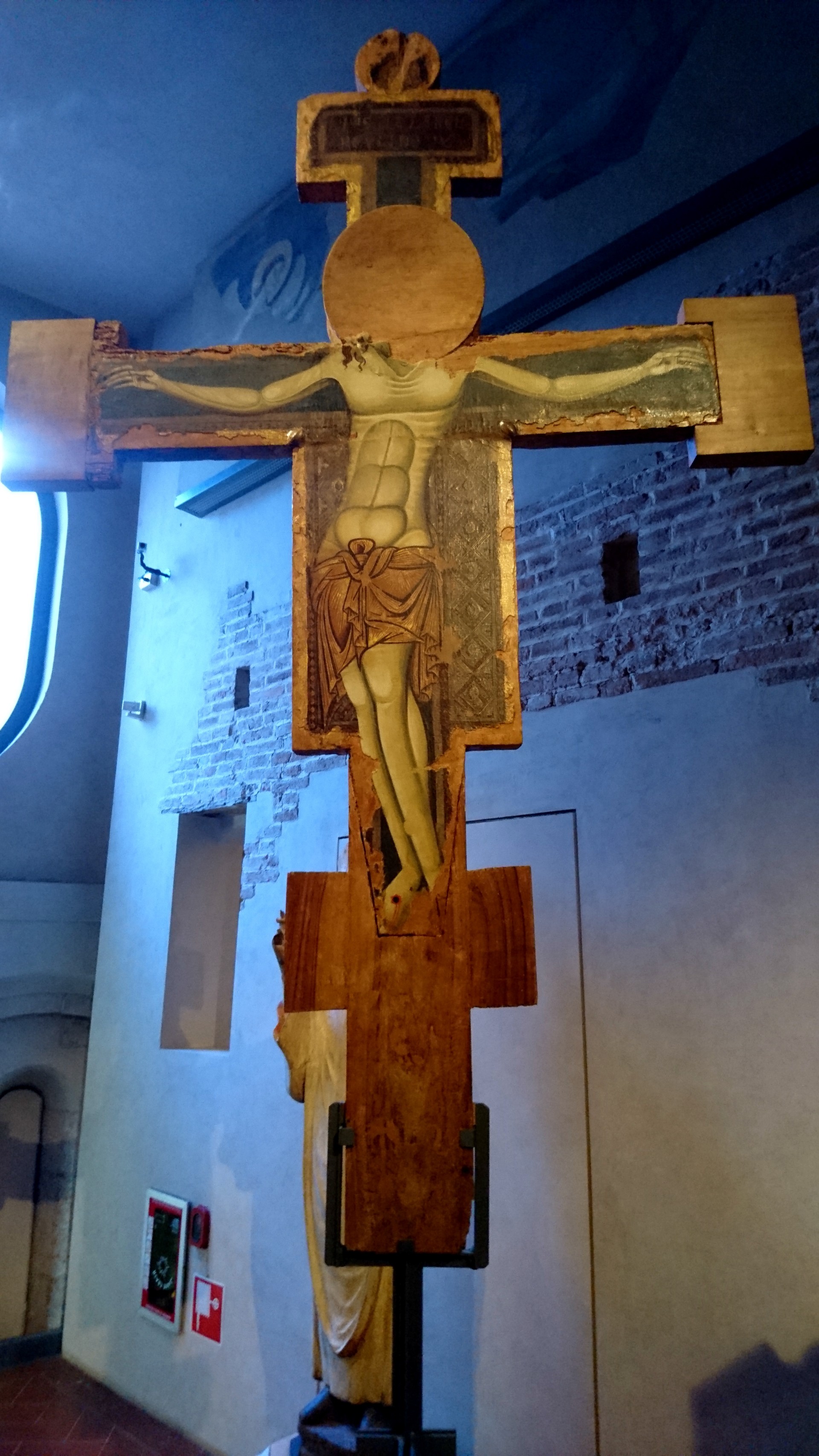
This Cross is made of the wreckage of migrant's boats - carrying runaways from war, hunger, and persecutions, who often do not reach a safe place to get help and a better future.
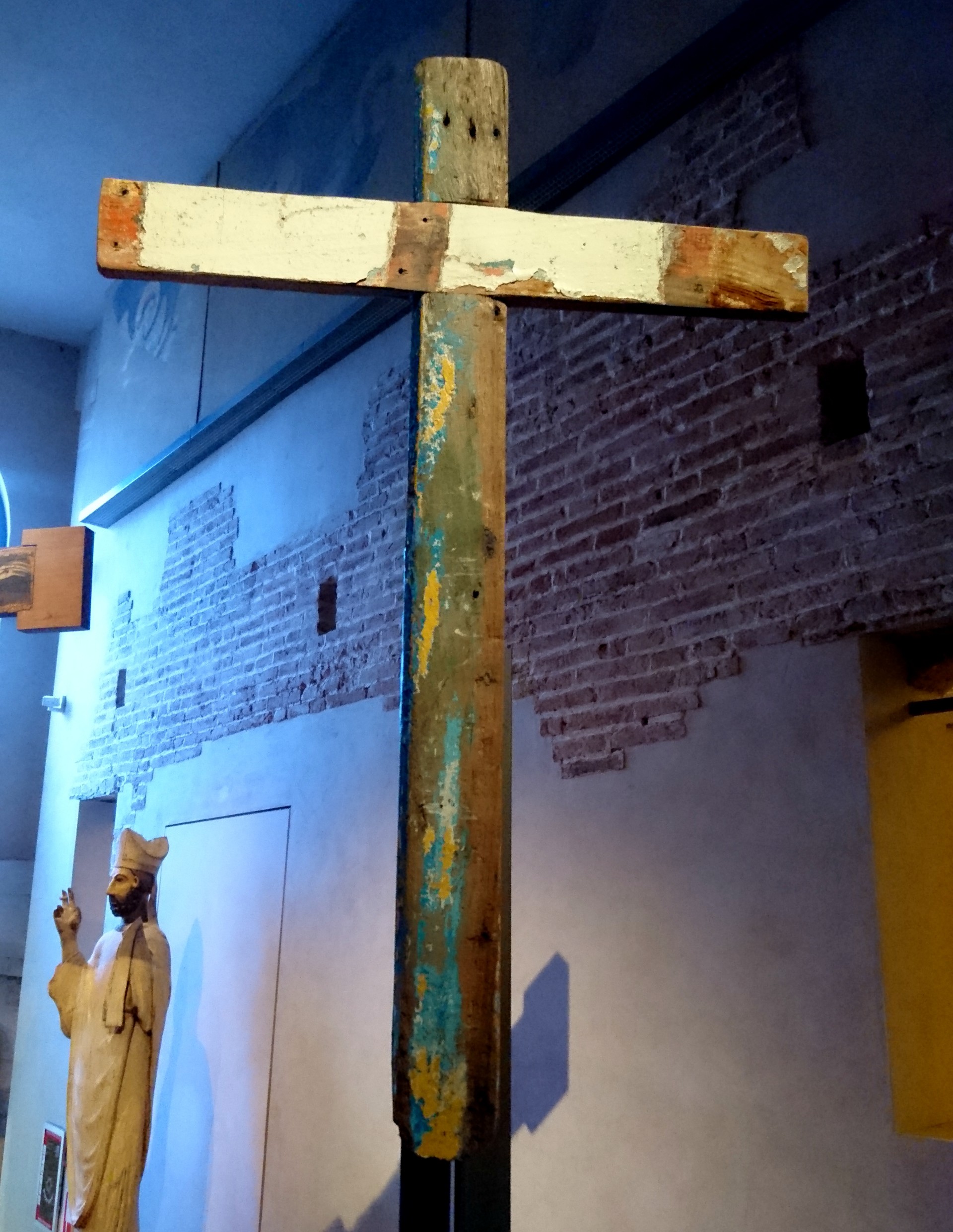
Donatello and about San Lussorio
Executed in Florence by the young Donatello, this is considered one of the masterpieces of the XV sculpture for the high technical quality and the modernity of the portrait from life. Saint Lussorio looks like a Renaissance prince, evoking the classical statuary.
The function of this work of art was to contain a small piece of the head of Saint Lussorio, a relic originally in Pisa and then brought to Florence in 1422 inside the Church of Ognissanti. In 1591 the Medici family decided to return this relic to Pisa and promoted the transfer of the bust-reliquary to the church of Santo Stefano dei Cavalieri. This work remained in the church until 1976 when it was stolen; it was found after some days and since then it was preserved in the museum.
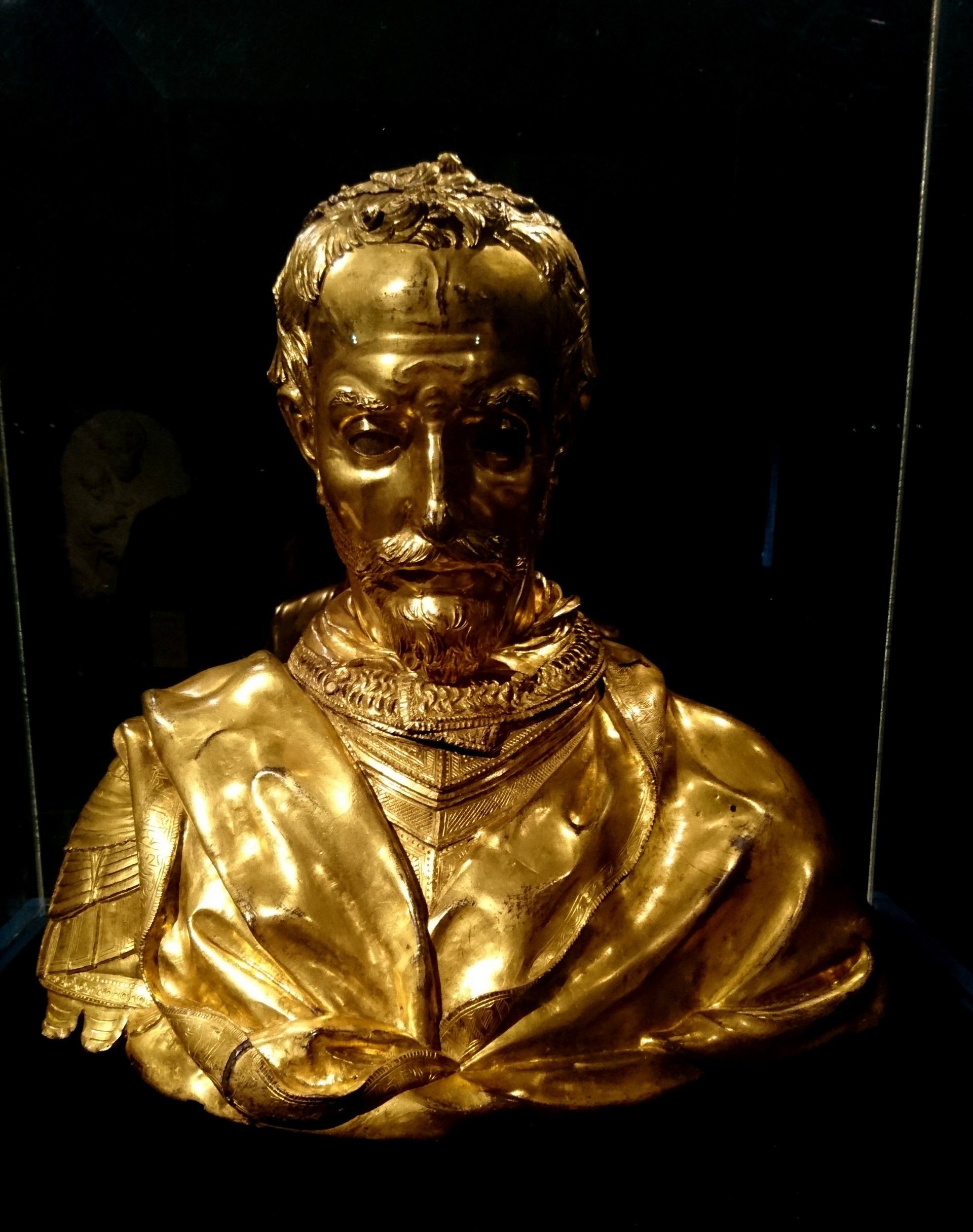
Photo gallery
Want to have your own Erasmus blog?
If you are experiencing living abroad, you're an avid traveller or want to promote the city where you live... create your own blog and share your adventures!
I want to create my Erasmus blog! →
































Comments (0 comments)